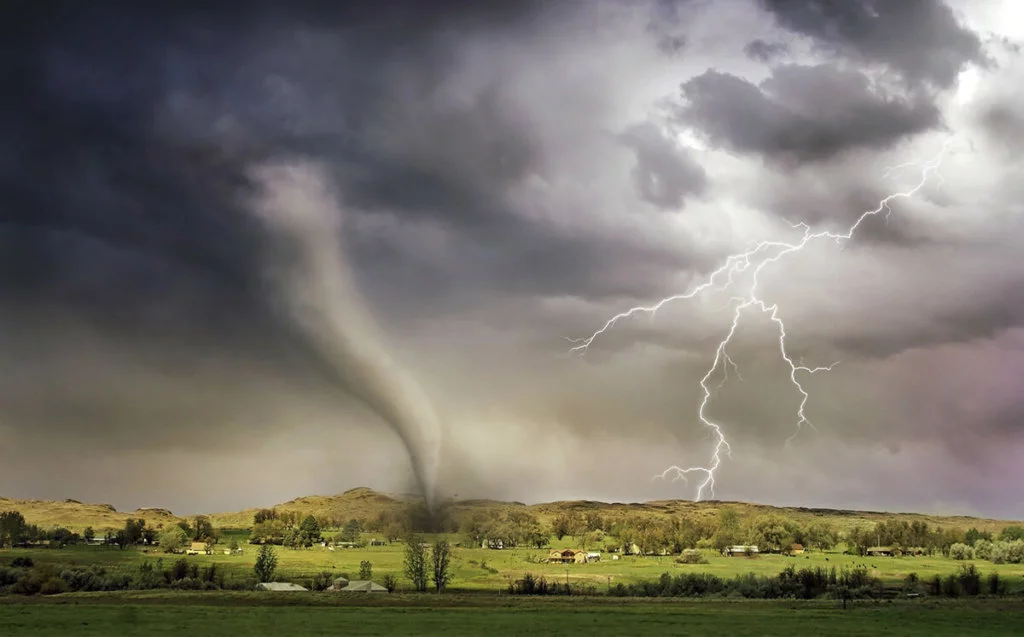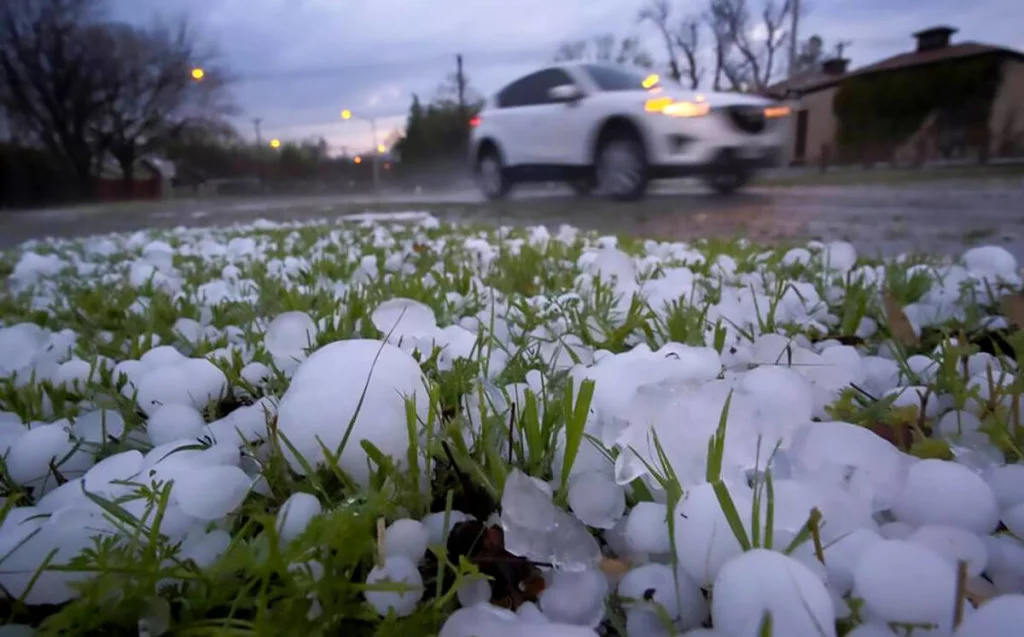
If you have considered going solar, you know most solar panels come with a list of warranties. Although some panels have a 25-year product warranty, the warranty only covers panel deficiencies, not external factors.
Homeowners must remember these panels are going on the exterior of their homes and will be exposed to external forces. Do Colorado residents need to worry about hail damage, and should Florida homeowners be concerned about hurricane-level wind and rain?
Here is how modern solar panels hold up against the powerful elements of Mother Nature and how you can feel confident in your custom rooftop system.

Rainstorms
Storms are one of the most common natural phenomena on this list and can occur in any location across the United States. Other than blocking the sun from the panels (panels perform at a lower efficiency), a storm will not have any effect on the lifespan of the panels. Regular storms can help the overall efficiency of a solar panel system.
Most panels eventually experience a buildup of dirt and pollen that can block the sunlight from being absorbed effectively by the solar cells. A frequent storm will wash the panels of any buildup and help them perform efficiently! Don’t worry if your state has several storms throughout the year—it actually might benefit your panels!
Snow
Rain might wash dust, dirt, and pollen away, but what happens when it snows? Snowstorms can cause large and heavy covering on any roof. This buildup causes two concerns among solar owners:
- Can solar panels withstand the weight?
- Can panels still produce efficiently with snow coverage?
First, solar panels are built with high quality materials and can hold several hundred pounds of pressure per square foot. This means your roof will likely break before your panels do because of the weight of even the heaviest snowfall.
Second, when snow builds up over the surface of a panel, it naturally produces 20-30% less electricity. This is a massive amount of energy being lost, especially if you live where it snows throughout the winter. Luckily, the surface of solar panels tends to heat up throughout the day. This causes any snow to melt quickly and disappear throughout the day, and their smooth surfaces allow snow to slide off without any obstruction.
In some locations like Minnesota or Washington, snowfall might be high enough solar panels do not have time to melt all snow coverage, so we suggest homeowners buy the appropriate tools allowing them to safely remove excess snow from the solar panels manually. In the end, snow should not have a long-term impact on the effectiveness of your panels and the amount of energy created.

Hail
Hail can be devastating to cars, roofs, and almost everything else. Do solar panels hold up against free falling balls of ice?
Previously, solar panels had their troubles with surviving hailstorms. The speed and impact would cause the panel’s surfaces to crack and even shatter in some instances. Luckily, this damage has caused most solar manufacturers to rethink the design of modern solar panels. After years of testing and improvements, solar panels now come reinforced with stronger aluminum frames and thicker tempered glass. This allows panels to absorb the impact of falling objects like hail better and distribute the force throughout the entire panel.
To prove solar panels’ large improvement, we can look at a hailstorm that occurred in Denver in 2017. In this storm, hailstones three inches wide fell from the sky for about half an hour. The National Renewable Energy Laboratory (NREL) headquarters was in the middle of this massive storm, and on their campus, they have a solar array including approximately 3,000 panels. Only one panel in the entire array suffered damage from the massive hail.
If you have any second thoughts of going solar because of hail, know solar technology and durability is improving. Many solar panel manufacturing companies are continually working on product tests allowing them to see how much damage their panels can endure without sacrificing productivity and making hail guarantees.
Hurricanes and Tornadoes
In a Category 5 hurricane, wind speeds can blow gusts of over 150 miles per hour. At this wind speed, little stands a chance of surviving. However, solar panels have been designed to withstand high wind speeds and must be installed according to city roof standards and regulations. This means before any system is energized it must be authorized and approved by a city representative.
Solar panels should lay low and close to the roof when installed properly. Panels should act as part of the roof, preventing any wind from going underneath the panels and causing lift.
To illustrate this more clearly, look at the effects of Hurricane Sandy that ripped across New Jersey in 2012. New Jersey is a top location for rooftop solar. Of the tens of thousands residential solar systems that crossed paths with the hurricane, only a couple dozen sustained any damages, and most of the damaged systems were not destroyed by the wind but by trees and power poles falling on top of the systems.
Solar owners can prepare for the worst when it comes to hurricanes, but they should not fear high wind speeds having any effect or causing damage to their panels.

Other Human Factors
If a solar panel can withstand the tests of Mother Nature, it can most definitely withstand any human force. You might worry about a baseball being thrown and hitting your panels, but like in a hailstorm, your solar panels can withstand the impact of a speeding baseball.
What if you accidentally step on your panel(s)? Don’t worry, a single panel should easily withstand the weight of an adult. However, we do not suggest you purposefully step or jump on your solar panels. Solar panels are built to last and withstand any external force with ease.
Going Solar with Blue Raven Solar
At Blue Raven Solar, we use the highest quality and most durable panels. We also offer a production guarantee, a 10-year workmanship warranty, and a 25-year panel warranty. We make going solar simple and pain-free.
Do you want to become a part of the Blue Raven Solar family and start saving big by going solar? Receive a free solar consultation today. In this consultation, one of our solar specialists will walk you through a custom-designed solar proposal for your home and give you an estimate of how much you can save a month.



Sorry, the comment form is closed at this time.